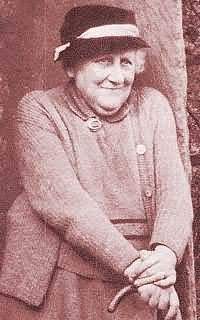

Her story is a masterclass in how to give something back, and in return the Lake District has paid her the highest tribute – a series of lasting literary memorials that are neither twee nor crass.While many know the enchanting tale of Peter Rabbit, few know the tragic tale of his creator, English author Beatrix Potter. Her husband William Heelis's former offices in Hawkshead have been transformed into a gallery featuring her original drawings, and in Bowness-on-Windermere there is The World of Beatrix Potter, an attraction that boasts impressive re-creations of scenes from the books, a beautiful, peaceful garden and absorbing films about her life.Īfter marrying Heelis, Potter wrote only four more books and then devoted herself to working the land and managing her vast estates until she died at the heart of the landscape she adored. Now the National Trust owns around a quarter of the Lake District, and it's in part thanks to Potter that the rolling hills and glittering lakes are as open and uncluttered as they are.ĭespite the Peter Rabbit toys, keyrings and jigsaws at every turn, the Lake District has repaid Potter's kindness by honouring her in as classy a way as possible. Potter married late in life for her generation, and had no children, so there was no one to dispute her wishes. Using the money from her books she bought up swaths of the Lake District to protect it from encroaching development, and struck a deal with the National Trust allowing it to buy half the land from her at cost, and have the other half after her death. Preservation and conservation were key to her. An intimation of her own literary immortality? Perhaps, though she was no prima donna.

The policeman leading Alexander home in The Tale of Pigling Bland does so along the footpath to Hill Top, unchanged from the illustration of the 1913 book.Īlthough she only partly lived in Hill Top, Potter loved the place, and when she died in 1943 she stipulated the rooms and furnishings "should be kept in their present condition". The half-landing is precisely as it looked in The Tale of Samuel Whiskers the dolls in The Tale of Two Bad Mice are at the foot of the bed. Potter's love of the house, and the district around it, shines through as the copies of her books, judiciously scattered around, show how she depicted the staircases, doorways and country lanes in the illustrations for her stories. It is perfectly preserved crossing the threshold from the fragrant, colourful garden into the beautiful house is like stepping back in time. With the proceeds of the early books, Potter was able to buy Hill Top, a 17th-century farmhouse in the village of Sawrey, now owned by the National Trust. She spruced it up for publication, and the story was accepted by the publisher Frederick Warne, thus ensuring immortality for a small Victorian publishing house (now part of Penguin). Scenting commercial success in her stories, she begged back the original Peter Rabbit letter she had sent to a sick child. She never shied away from depicting nature red in tooth and claw – although saved from the attentions of a fox, poor old Jemima Puddleduck loses her eggs to a pair of overexcited puppies anyway – and she was not the demure English rose that American actor Renée Zellweger's portrayal of her in the 2006 biopic Miss Potter might suggest. Those only passingly familiar with her work think cutesy bunnies are what define her, but it seems to me that Potter exhibited a literary and business acumen from the start.

It was on one of these later visits that she began to dream up her stories of anthropomorphic woodland animals, initially presented in letters to young children of her acquaintance. Though she will forever be associated with the Lakes, Potter was born in London in 1866, and fell in love with Cumbria while on family holidays, which continued into her 30s.


 0 kommentar(er)
0 kommentar(er)
